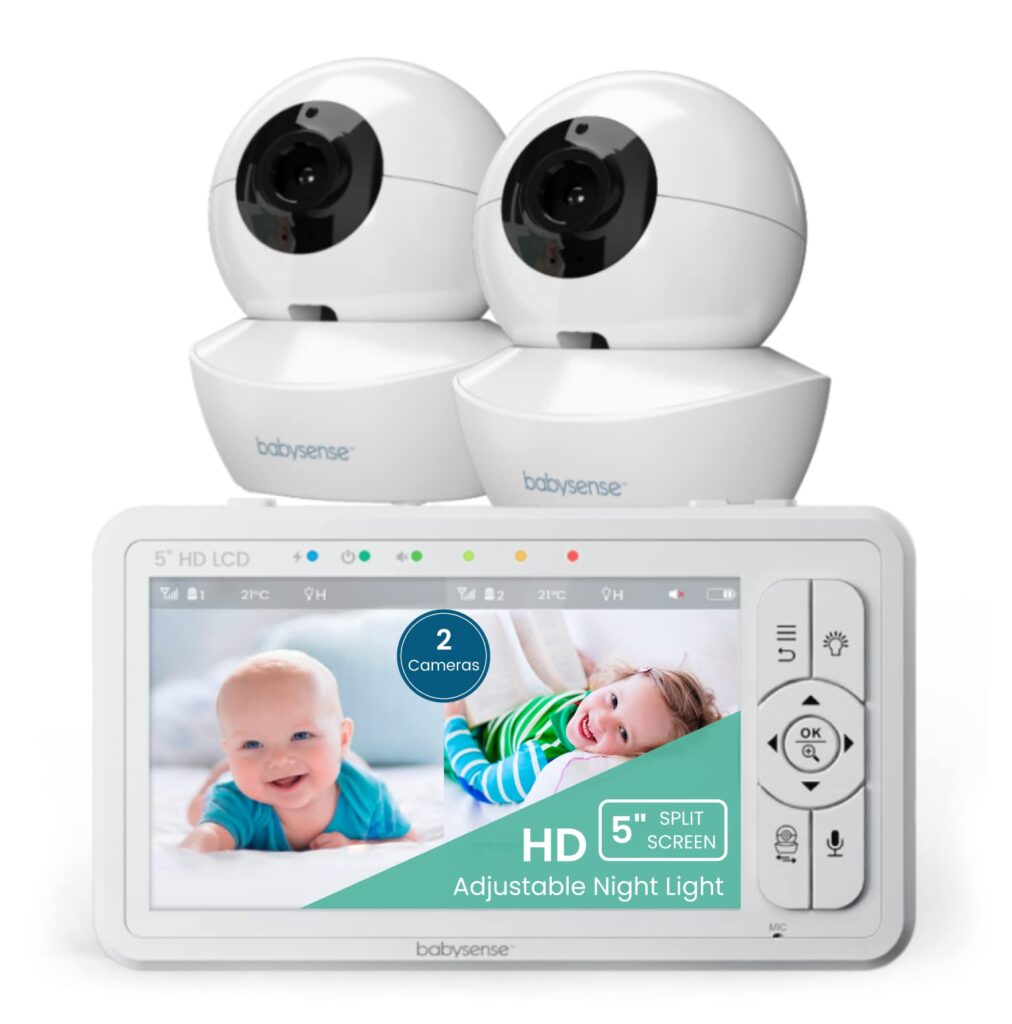WiFi baby monitors have grown in popularity as a way for parents to keep a watch on their children. They provide real-time monitoring even when you’re not there, convenience, and cutting-edge functionality. However, the important concern still stands: are wifi baby monitors safe and necessary ? This post explores the security of these gadgets, contrasts them with non-WiFi options, and offers advice on how to keep your monitor safe.
Related post: How to Tell If Baby Monitor is Hacked?
- What Are WiFi Baby Monitors?
- Features of WiFi Baby Monitors
- Are WiFi Baby Monitors Safe?
- Potential Risks of WiFi Baby Monitors
- How to Ensure Safety with WiFi Baby Monitors
- Are Non-WiFi Baby Monitors Safe?
- Step-by-Step Guide to Choosing a Baby Monitor
- Why Parents Love WiFi Baby Monitors
- Conclusion: Make an Informed Choice
- FAQs About Are WiFi Baby Monitors Safe?
What Are WiFi Baby Monitors?

WiFi baby monitors are gadgets that send your baby’s audio and video to your computer, tablet, or smartphone over your home’s internet connection. You can check on your baby from almost anywhere with these monitors, unlike traditional ones that have a restricted range and capability.
Features of WiFi Baby Monitors
- Real-time streaming: Access video and audio from your baby’s room remotely.
- Smart notifications: Get alerts for movement, sound, or changes in room temperature.
- Two-way communication: Talk to your baby or soothe them from another room.
- Recording and playback: Save footage to monitor your baby’s sleep patterns.
Are WiFi Baby Monitors Safe?

Yes, but only after taking certain safety measures. Although WiFi baby monitors are typically safe, there are some concerns associated with them, primarily related to cybersecurity and privacy. You can use them safely if you are aware of these hazards and take the appropriate precautions.
Potential Risks of WiFi Baby Monitors
- Hacking Concerns: Since these monitors are internet-connected, there’s a risk of unauthorized access if security protocols aren’t followed.
- Data Privacy: Some models store footage on cloud servers, raising concerns about data breaches.
- Signal Interference: WiFi-connected devices might experience lag or interruptions.
How to Ensure Safety with WiFi Baby Monitors

Here are practical steps to enhance the security of your WiFi baby monitor:
- Choose a Monitor with Encryption
Opt for devices that use advanced encryption standards (e.g., AES-256) to secure data transmission. - Use Strong Passwords
Create unique, complex passwords for both the monitor and your WiFi network. Avoid default credentials. - Enable Two-Factor Authentication (2FA)
Monitors with 2FA add an extra layer of security by requiring a second verification step. - Regularly Update Firmware
Manufacturers often release updates to fix security vulnerabilities. Make it a habit to check for and install these updates. - Secure Your WiFi Network
Use WPA3 encryption for your router, disable guest networks, and ensure your router’s firmware is updated.
Are Non-WiFi Baby Monitors Safe?

If you’re still worried about online risks, you might consider non-WiFi baby monitors. These devices use radio frequencies or direct signals to communicate, eliminating internet-based vulnerabilities.
Pros of Non-WiFi Baby Monitors
- No hacking risks: Since they don’t rely on the internet, hacking concerns are minimized.
- Simplicity: Easy to set up and use without complex configurations.
- No lag: Reliable, real-time monitoring without signal delays.
Cons of Non-WiFi Baby Monitors
- Limited range: You must stay within a specific distance for the device to work.
- Fewer features: Advanced options like remote viewing or notifications aren’t available.
Step-by-Step Guide to Choosing a Baby Monitor

Follow this guide to pick the best monitor for your family:
1. Understand Your Needs
- Do you need remote access? Go for WiFi baby monitors.
- Prefer simplicity? A non-WiFi monitor might be the way to go.
2. Check Security Features
- Look for encryption, secure logins, and regular firmware updates.
3. Evaluate Image and Audio Quality
- Ensure clear video resolution and sound clarity for effective monitoring.
4. Read Reviews
- Check customer feedback to assess reliability and safety.
5. Compare Prices
- Balance features and cost to find the best value for your budget.
Why Parents Love WiFi Baby Monitors

Despite these reservations, a lot of parents opt for WiFi baby monitors because of their unparalleled ease. Peace of mind comes from being able to check on your infant while running errands or at work. More comfort is offered by cutting-edge technologies including HD video and motion warnings.
Conclusion: Make an Informed Choice
Whether your baby monitor is WiFi or not, how you use it ultimately determines its safety. You can confidently keep an eye on your baby’s safety by selecting a reliable brand, putting security measures in place, and remaining informed.
FAQs About Are WiFi Baby Monitors Safe?
1. Are baby monitors secure?
Yes, baby monitors are secure if you follow basic security practices like using strong passwords, enabling encryption, and keeping the device’s firmware updated.
2. Is a WiFi baby monitor safe?
Yes, a WiFi baby monitor is safe when used with proper security measures, such as two-factor authentication and encrypted networks.
3. Are non-WiFi baby monitors safe?
Yes, non-WiFi monitors are considered safer in terms of hacking risks, as they don’t rely on internet connectivity.
4. What should I look for in a secure WiFi baby monitor?
Look for features like end-to-end encryption, two-factor authentication, and frequent firmware updates.
5. Can baby monitors be hacked?
Yes, baby monitors can be hacked if proper security steps aren’t followed. Always use secure passwords and update firmware regularly to prevent unauthorized access.





